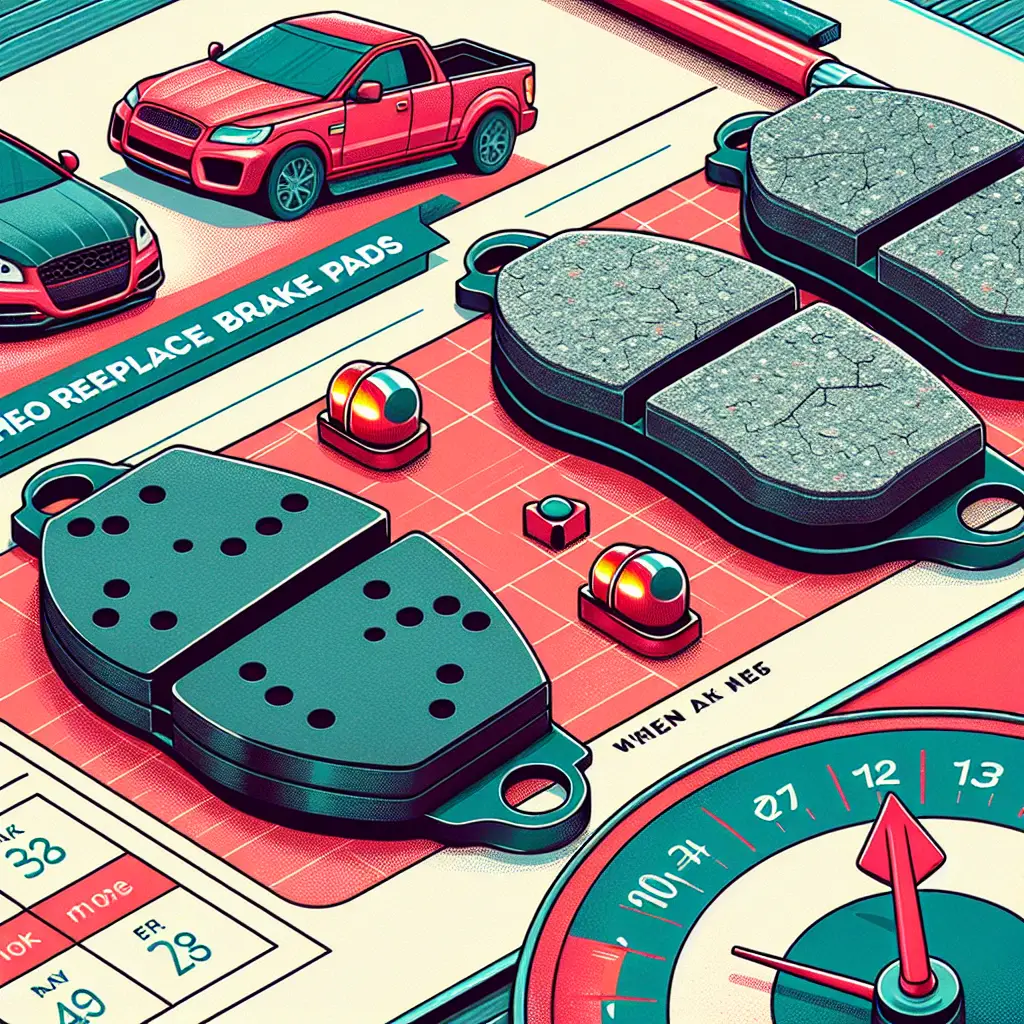When to Replace Brake Pads: An Essential Guide for Safe Driving
Brakes are arguably the most critical safety feature on your vehicle, and the brake pads play an essential role in making sure that your car can stop promptly and safely. Knowing when to replace brake pads is crucial for maintaining the safety of your vehicle, and understanding the signs of wear can help you act before it’s too late. Let’s dive into the details of brake pad health so you can stay safe on the road.
Understanding Brake Pads
Firstly, it’s vital to understand what brake pads do. In a disc braking system, which is common in most modern vehicles, brake pads are the components that apply pressure and friction to the brake rotors. This action slows down your vehicle and eventually brings it to a stop.
The Lifespan of Brake Pads
The lifespan of brake pads varies significantly depending on your driving habits, the type of vehicle you drive, and the quality of the pads themselves. Generally, brake pads can last between 25,000 and 70,000 miles. However, this range is not set in stone, and many factors can lead to more frequent replacements being necessary.
The Critical Signs It’s Time to Replace Your Brake Pads
1. Squeaking or Squealing Noises
One of the first signs that your brake pads need attention is an audible squeaking or squealing noise when you apply the brakes. Manufacturers often include a small metal shim, known as an indicator, which produces this noise as an early warning sign of wear. Consumer Reports explains that while occasional noises might be considered normal, consistent sounds usually indicate it’s time to check your brake pads.
2. Reduced Brake Performance
If you’ve noticed that your vehicle isn’t stopping as quickly as it used to, or that the brake pedal feels softer or sinks further than usual, it could be an indication that your brake pads are wearing thin. Reduced performance can lead to longer stopping distances and put you at risk.
3. Visual Check
Most vehicles allow for a visual check of the brake pads. You can often see the brake pad through the wheel. The pad should be at least 1/4 inch thick; if it’s any thinner than that, it’s time to get them replaced. For a more detailed visual inspection, Car and Driver magazine provides a useful guide on what to look for.
4. Vibration When Braking
Feeling a vibration or pulsation through the brake pedal or steering wheel during braking is not normal. It’s a sign that your brake pads may be worn uneven or that your rotors may need attention.
5. Brake Pad Warning Light
Many modern cars are equipped with brake pad warning lights, which illuminate on the dashboard when it’s time for a replacement. Do not ignore this light; it’s a clear indicator that your vehicle needs immediate attention.
Safety and Costs: Why Procrastination Can Be Risky (And Expensive!)
Neglecting your brake pads can lead to more than just ineffective braking; it can cause damage to your brake rotors, which are more expensive to replace. The longer you wait, the higher the risk of a brake system failure and the more costly the repairs can become. The National Highway Traffic Safety Administration (NHTSA) underscores the importance of routine brake system inspections to prevent accidents related to brake failures.
Expert Insights: What Professionals Say
Experts in the automotive industry recommend having your brake pads checked with every tire rotation, which is typically every 5,000 to 7,000 miles. This doesn’t mean they will need to be replaced each time, but it allows for consistent monitoring of their condition.
Conclusion: Staying Proactive for Safety
Remember that while cost and convenience play roles in vehicle maintenance, safety should always be the leading concern. Recognizing the signs that it’s time to replace brake pads and acting on them before they become a significant issue is the best way to keep yourself, your passengers, and others on the road safe.
In conclusion, brake pads are a crucial safety feature that should never be overlooked. Whether you’re hearing unusual noises when you brake, noticing performance issues, experiencing vibrations, or your car’s warning light comes on – these are all signs that require your immediate attention. Stay proactive about replacing your brake pads and consult a trusted mechanic if you’re unsure.
It’s clear that routine maintenance and acting on warning signs is the key to preventing accidents and avoiding larger repair bills. By maintaining an awareness of the condition of your brake pads, you can ensure your vehicle remains a reliable and safe mode of transportation. Stay safe and happy driving!
For more helpful content on vehicle maintenance and safety, be sure to subscribe to our blog and stay informed as you cruise the roads with confidence.

